Audrey Rohde celebrated her first birthday last week. Just five weeks earlier, so did her “twin” sister, Lillian Rohde.
Thanks to a beautiful stroke of luck, the girls really are sisters. But they were born 1,400 miles apart — to two different women.
Chicago residents Justin and Nancy Rohde had struggled with fertility since they first began trying to start a family in 2012.
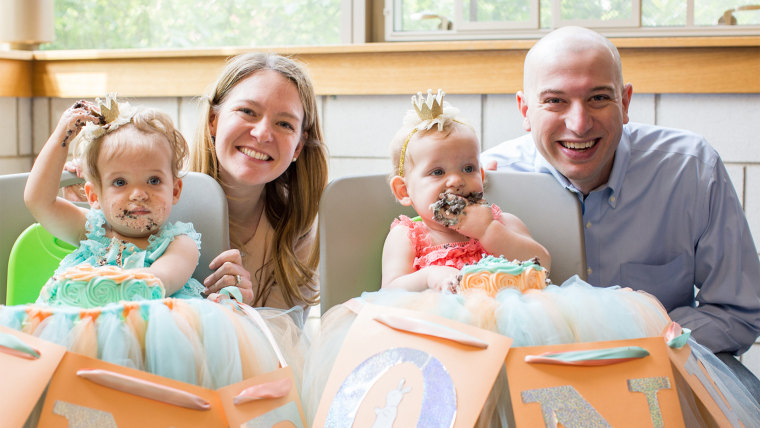
After the Rohdes turned to surrogate Ashley Brown for help, Nancy got a surprise — she was pregnant.
"It was a total shock," Nancy told TODAY.
Nancy, 33, has polycystic ovarian syndrome, a disorder that can impair ovulation, the frequency that eggs are released.
It affects as many as 5 million women in the U.S., according to the Centers for Disease Control. She also has a thinner than average uterine lining, which can make supporting an embryo and developing fetus difficult.
The couple turned to in vitro fertilization treatments, or IVF, to heighten their odds of becoming pregnant. But after repeated unsuccessful rounds of treatment, they started considering another, less conventional route to parenthood — surrogacy.
“I don't think surrogacy is for everyone. But for me, I felt like I needed to work hard and it would lead me down a path to meet my children,” Nancy said.
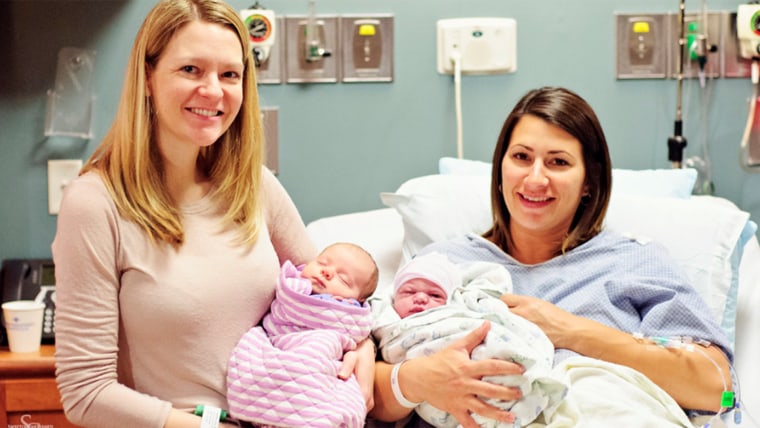
People turn to surrogacy for many different reasons, according to Dr. Brian Kaplan of Fertility Centers of Illinois. Oftentimes, surrogacy can be a route to parenthood for same-sex male couples, single women or couples who have decreased odds of pregnancy, either because of age or conditions like Nancy’s.
With gestational surrogacy, the most common method used today, a woman carries an individual or couple’s child for them. She is not biologically related to the baby.
Not just anyone can be a surrogate. Pink and Blue Surrogacy and Fertility, the Wisconsin-based agency through which the Rohdes found Brown, dedicates most of their resources to rigorously vetting carrier applicants.
According to Jesse Skalitzky, surrogacy coordinator at Pink and Blue, only about 5 percent of applicants make the cut.
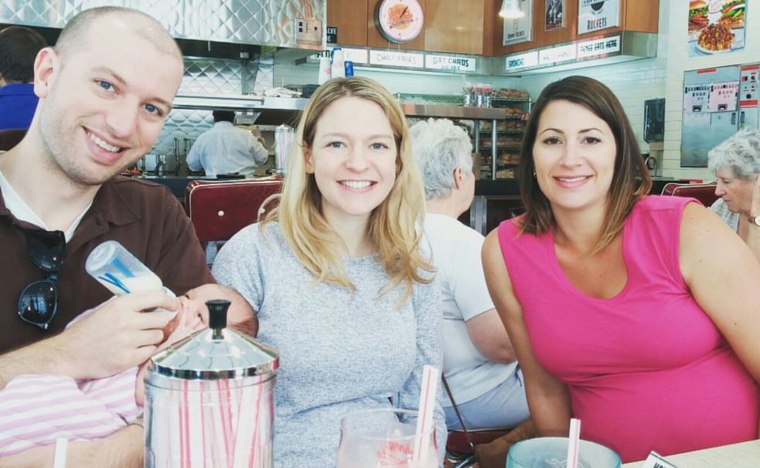
“These are women who are good a being pregnant and like being pregnant,” Skalitzky told TODAY. “Either their family is complete — they are sure of that — or they are not sure if they want more children, but they want to be pregnant again.”
If IVF and surrogacy are costly. But in Illinois, insurance covers much of the cost associated with IVF treatment for employees of Illinois-based companies, according to Dr. Kaplan, Nancy’s fertility doctor.
Costs of surrogacy, however, can stretch into the tens of thousands, due to legal fees, IVF and surrogate compensation.
There aren't many available statistics on surrogacy, but anecdotally, at least, Skalitzky said she has seen a rise in the amount of couples and individuals using surrogacy to build their families.
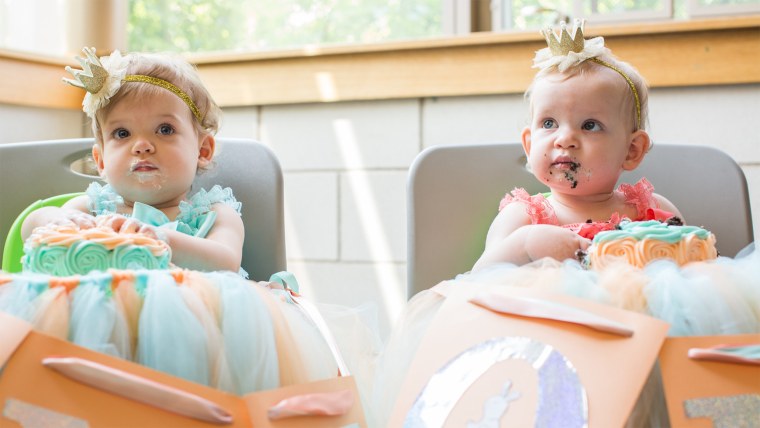
The Rohdes initially worked with a different surrogate who miscarried. After that heartbreak, Skalitzky’s agency matched the Rohdes again — this time with then 30-year-old Brown, a married mother of three in Plain City, Utah. Brown’s location was not ideal, but she seemed to be the perfect fit.
At the same time that the Rohdes were negotiating their contract with Brown, they decided to do one more round of in vitro. Nancy thought it might be her last shot at having her own pregnancy.
“The worst case scenario there is that we end up with two babies, and that’s pretty awesome,” Justin Rohde said.
That’s exactly what happened. The Rohdes informed Brown of Nancy’s pregnancy, and together decided to move forward with Brown’s fertility treatments.
The three had already agreed that they wanted open communication during and after Brown’s pregnancy. But the dual pregnancies fostered an even more special relationship between Brown and Nancy.
“We would compare how we were feeling and doctors appointments,” Nancy said. “She was very plugged into everything that was happening with my pregnancy, which was more difficult than hers with Audrey.”
They would exchange elaborate care packages each trimester, and Nancy and Justin traveled to Utah for Brown’s 20-week ultrasound and for Audrey’s birth.
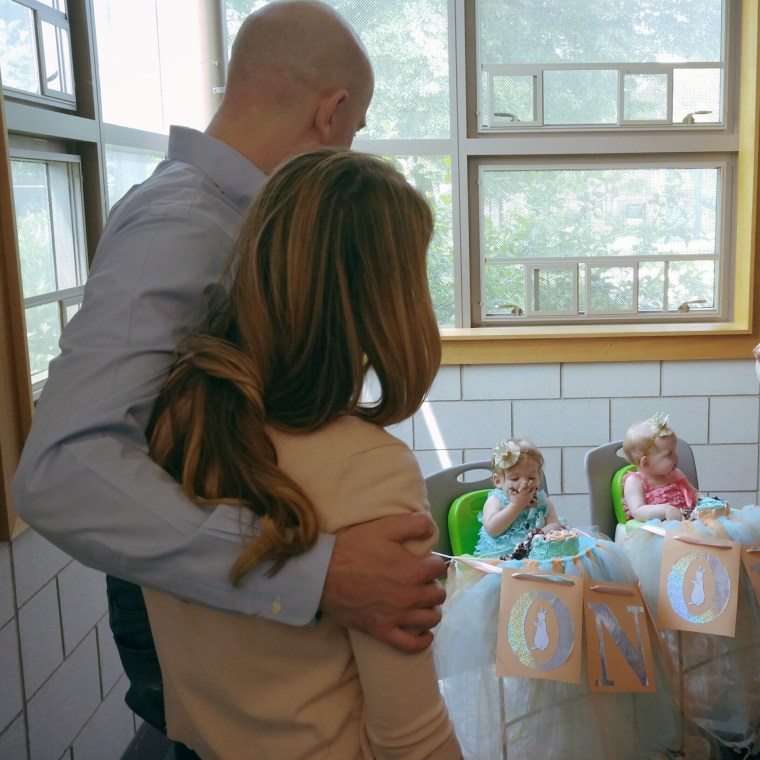
Although communication with Brown has slowed since the girls’ births, in part because of the newfound stresses of parenthood, Brown still keeps tabs on the girls’ development through an app called Tinybeans. In the future, the Rohdes hope Brown will continue to play a role in their family’s life.
“She’s like an aunt, but that’s really not a good description,” Justin Rohde said. “It’s very much not a motherly role —at the same time there will always be some sort of bond there.”
Brown attended Audrey and Lillian’s first birthday party in May. It marked the first time she had visited since giving birth to Audrey.
“Watching them watch their girls was just everything for me,” Brown told TODAY. “Seeing all their happiness and excitement and their feelings that their family is complete — that I was able to do that was why I got into surrogacy.”
Birthday photos courtesy of Julie Dietz.